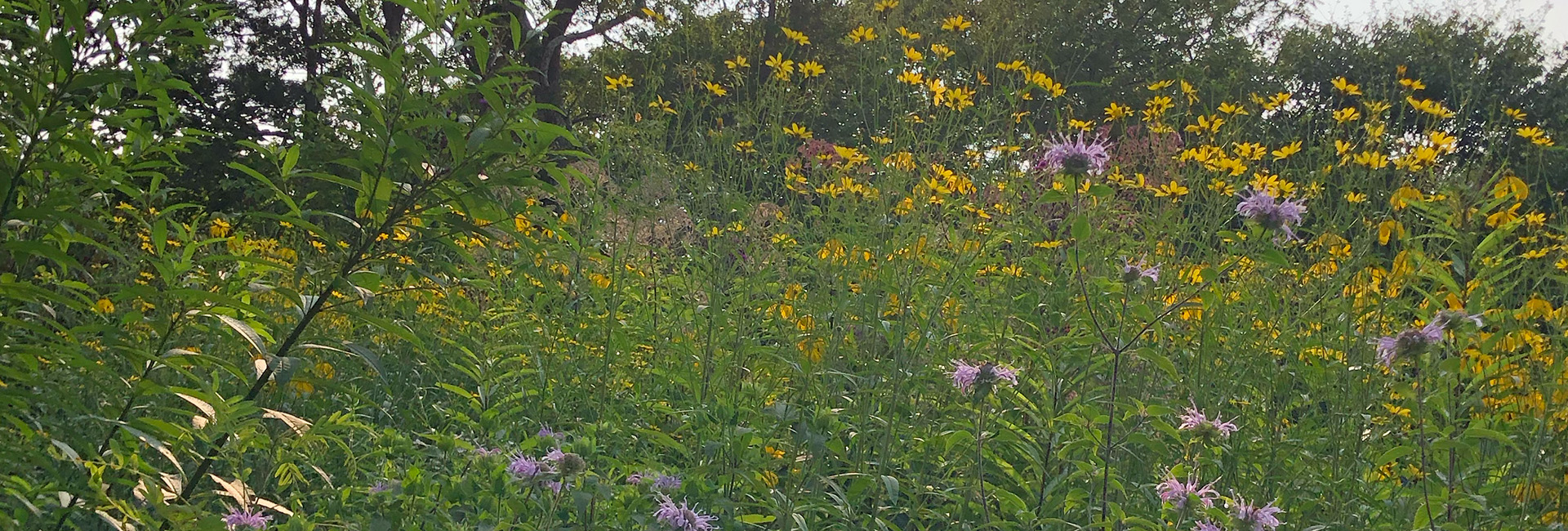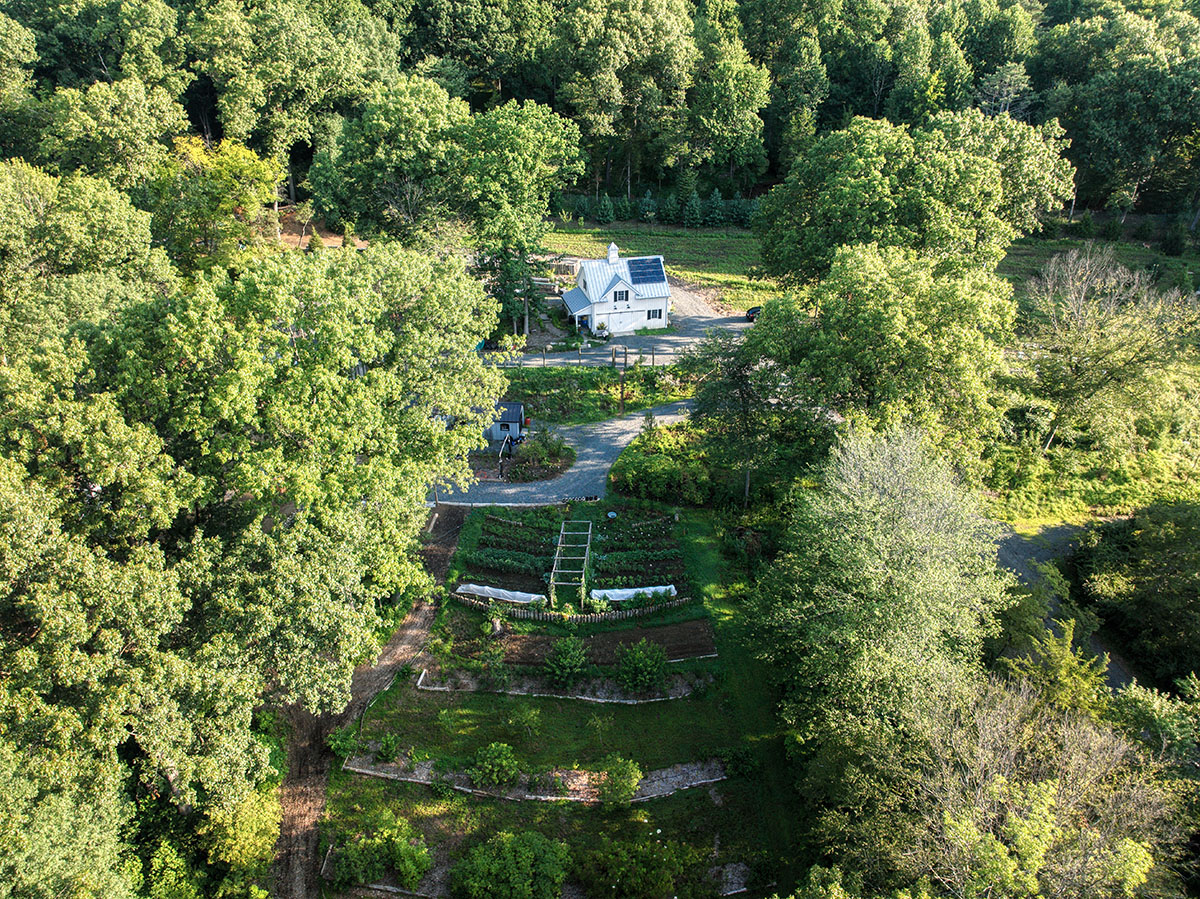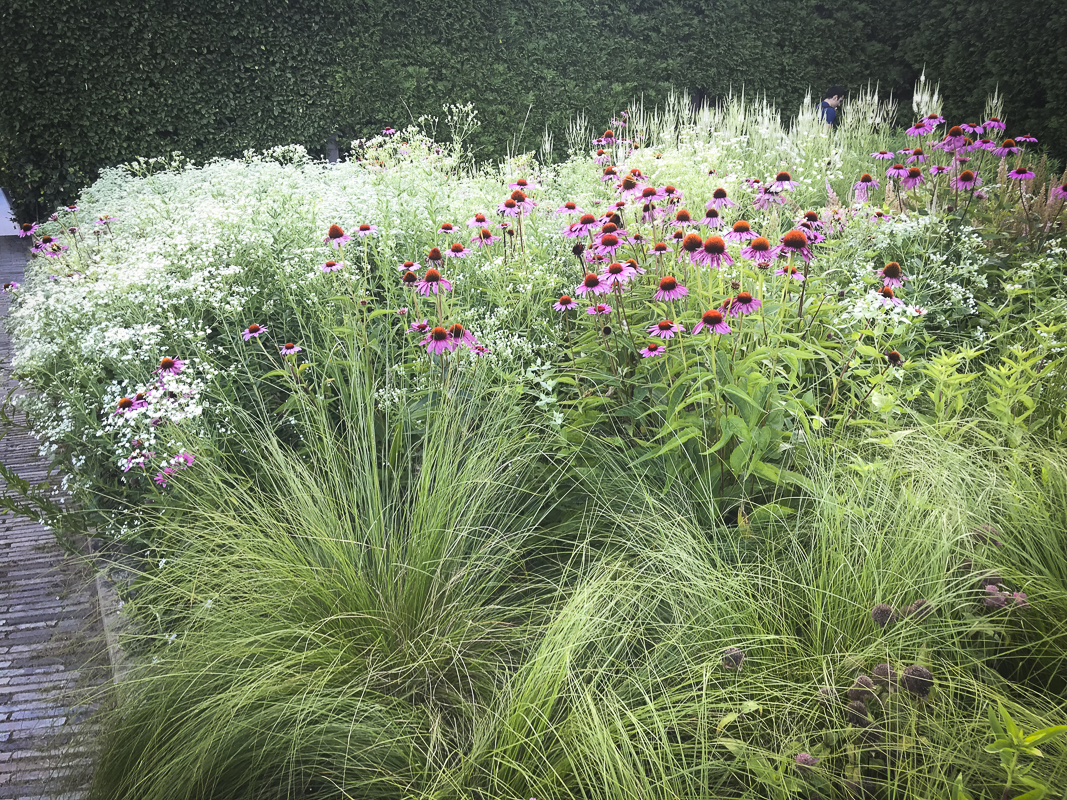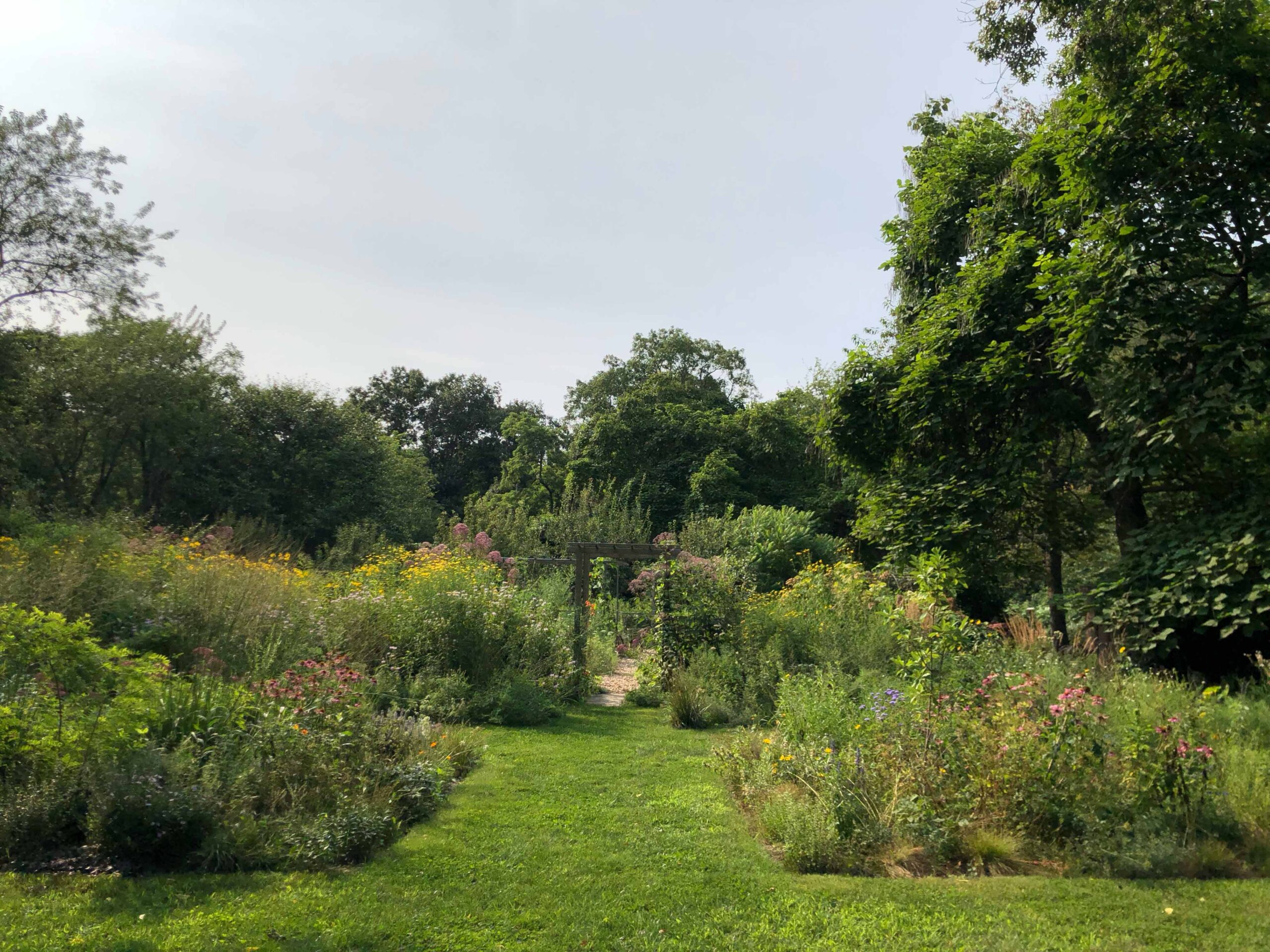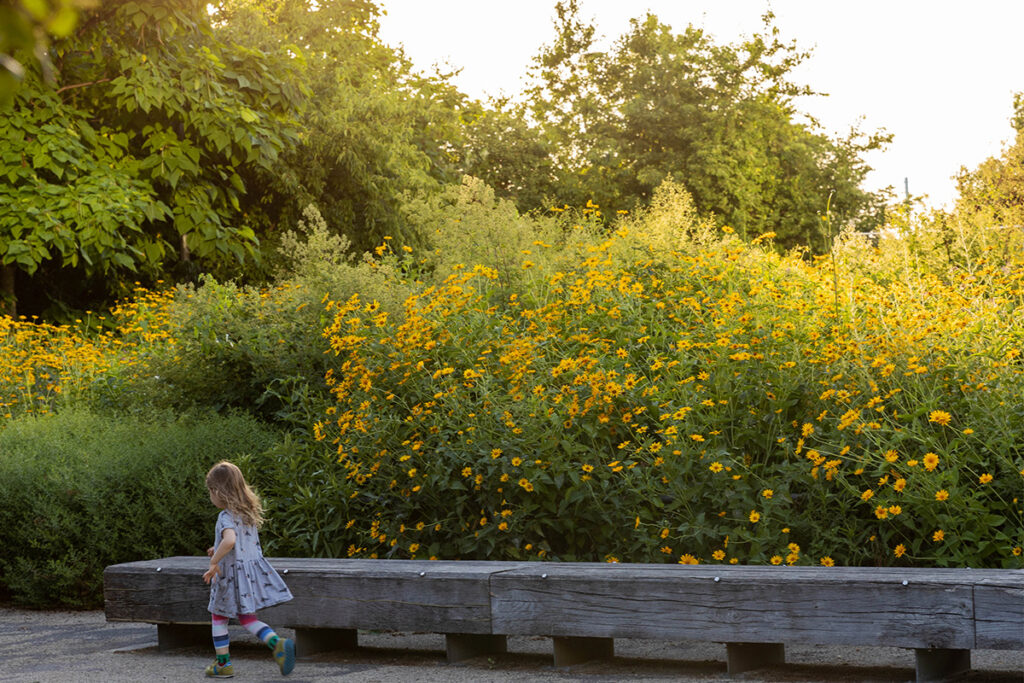
Rashid Poulson probably wouldn’t be where he is today if he hadn’t gotten bored at work. The horticultural director of the Brooklyn Bridge Park (BBP), one of the city’s most exciting new parks and our newest Pathways to PRFCT Partner, had zero interest in gardening when he was studying engineering in college. But when the hours dragged during his job as a cashier at the Brooklyn Botanic Garden’s former gift shop (BBG), he found himself reaching for the gardening books to pass the time, and “caught the bug.” His mother, a BBG gardener, suggested he apply to New York City’s Million Trees horticultural training program. A few weeks later, while working near the West Side Highway tackling invasive porcelain berry vines and trying to avoid poison ivy, he had an epiphany. “I remember how refreshing the air was, the exposure to the sun, and the interesting cast of intercity youths, who were brought together to tackle these daunting plants draped over canopies of oaks and many other mature trees,” he recalls. “In that moment, everything I was doing felt right and purposeful. I was contributing to the world I live in.” He found his calling.
After completing the program, where he studied arboriculture, ecological restoration, and urban landscape design, Poulson became an intern at the High Line for a summer before joining the team at BBP in 2012. He’s been there ever since, rising through the ranks—from seasonal gardener to director of horticulture in 2022. Designed by Michael Van Valkenburgh Associates, BBP encompasses 85-acres on the Brooklyn waterfront and features freshwater wetlands, flower meadows, woodlands, and salt marshes—all maintained organically and sustainably. Poulson shares how the gardeners tackle weeds, the native plants that make his heart sing, and more.
What’s the horticulture team at Brooklyn Bridge Park up to now?
We just kicked off irrigation in the park which is big for us because after nearly a decade, managing turf and park-wide irrigation is back under the horticulture department. This will bring all green operations within the park together holistically. We are working on remediations to some challenging lawn entrances that have extremely high visitation and compaction. And you’ll likely be thrilled to hear that we will be experimenting with incorporating clovers into a few of our small lawns to see where we can reduce our inputs into over 11 acres of turf areas throughout the park. We aim to expand on this as much as possible with larger lawns.
We are eager to dive into the spring planting season. There are some new Carex plantings (Carex radiata and Carex greyi) adjacent to lawns that I am certain will be successful. These plantings grow under trees like Metasequoias (dawn redwoods) and Taxodiums (bald cypresses) that provide ample shade along lawns, where full sun turf grasses are unable to establish. This will likely serve as a model for us to add a variety of native plants that could straddle the lawns in areas that are typically mulched pits and will function with lower maintenance inputs and will have fewer resources applied. And of course, they will heighten the aesthetics of the area.
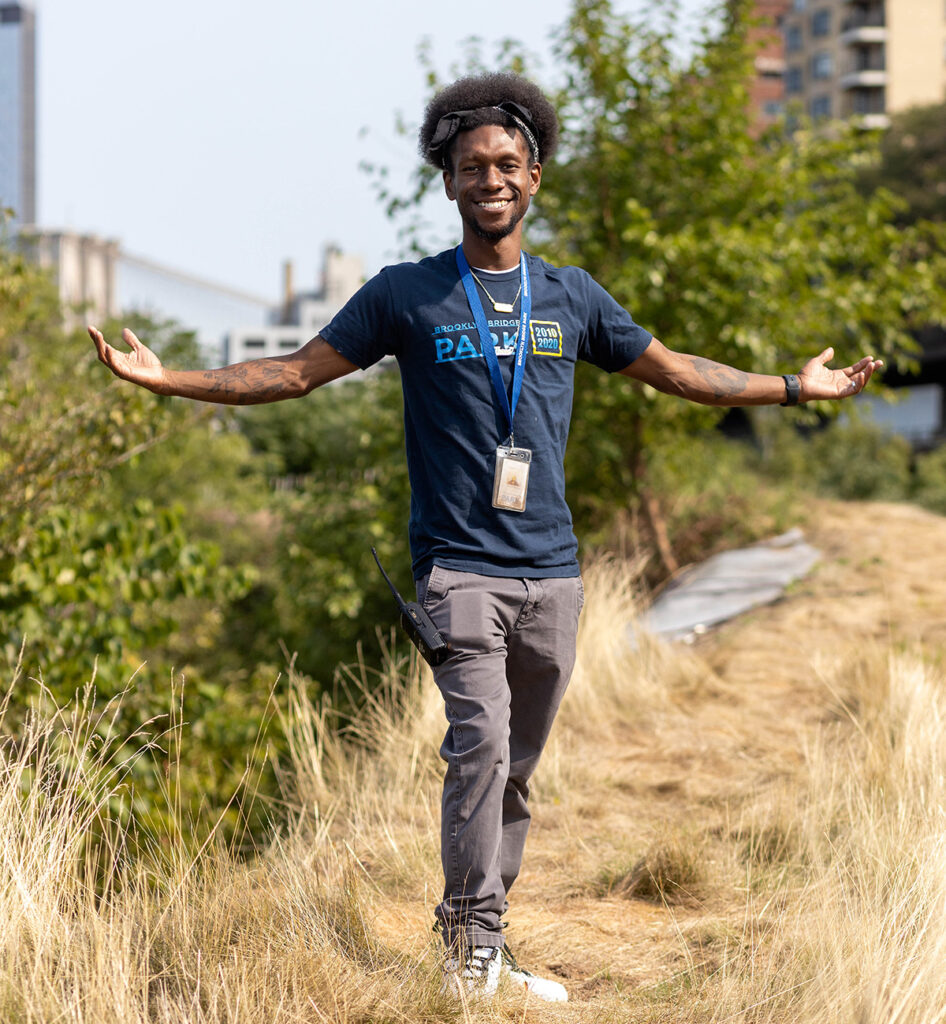
Poulson is the director of horticulture at Brooklyn Bridge Park. “With changing hardiness zones, it’s a challenge to navigate the layers of new information, and then turn that information into appropriate action. For example, do you water a struggling tree during drought? Or do you accept it as the larger reality of climate change in that say 30 years from now, this tree might not be able to survive in this particular range or microclimate of New York City?” Photo by Alexa Hoyer.
What are some of the tasks/practices that you are doing now in the garden?
The name of the game this time of the year is staying on top of the weeds ahead of summer. We’re trying a new method this year: a radial approach versus jumping directly into big clumps of leaves. Imagine a 10-foot x 10-foot area, where you’ll find things like Gallium, nettle, and then a bunch of mugwort forming in the middle. The instinct might be to run straight for the mugwort and grab it, especially considering how aggressive it is. But you really want to start at the perimeter, the furthermost perimeter of your weed populations and subtly work your way in. This way we can boost our thoroughness and effectiveness, as well as have as delicate a footprint as possible. When you are utilizing those radial approaches, you allow the eye to prioritize a little bit better. Once you’re done, you’ve also essentially closed off that situation and prevented the spread of these hot pockets of weeds that we have throughout the park.
Our gardeners are always looking to see what weed pressure there is—what is close to flowering or close to setting seeds. In areas where seed is starting to set, we might push those areas to the top of the priority list, getting in and cutting out those seed heads and putting them in actual trash bags so that we don’t broadcast that seed potentially any further. For other types of plants, like crown-vetch growing on our soundberms, we hit them a couple of times with a weed whacker before they can start establishing seed. That usually kicks out the vigor of them.
And when do you do perennial cutbacks at the garden?
We are also a few weeks out from our second wave of cutback, which will focus on Panicum grasses. I think the paradigm shift of moving out of fall cutbacks into spring is important. We left these stands in place from the previous year to provide sparrows and other native birds shelter, seed, and nesting potential in select areas throughout the park.
By doing this we’re providing a resource for wildlife, but we’re also challenging the common garden aesthetic by having these stands of species like Panicum hang out over winter until May or late May even at that. We also leave Hibiscus moscheutos (swamp rose mallow) up until around June, and will also leave older stems that still have stem nesting bee potential year-round and let the new growth just flush right through. There’s beauty in those faded stems.
When we do cutbacks, we’ll leave the debris on the ground to return it to the soil. But for areas where we have a dense volume of debris, we’ll try to reutilize it as a duff layer in areas to both suppress weeds and give back to the landscape.
How do you communicate your naturalistic-approach to land care to park goers?
I’m a strong believer in doing whatever we can to address “plant blindness” and encourage people to visually accept plants in all stages of their life cycle. We certainly don’t want parkland to look abandoned, but we walk a fine line between a wild or natural look and an ultra-maintained garden bed. I always emphasize the power of a clean edge line from walkway to garden bed. It’s such a simple but effective way of showing that what we’re doing is intentional. These details go a long way in building acceptance and appreciation of our park’s aesthetics and a plant’s natural behavior.”
I also try to remind myself to get out of my plant bubble and remember that not everyone looks at a garden or natural world the way I do now. Before I became a gardener, I also had plant blindness. I want to change this for others, like me, who grew up in an urban environment, and open their eyes to a new way of seeing. Perennial plants aren’t dead in New York winters!
The park has become a refuge for wildlife, like this Black-Crowned Night Heron, spotted in the wetlands on Pier 1. Redwing blackbirds come to the salt marsh. Song Sparrows nest in the crowns of Hibiscus (swamp rose mallow) stands year after year. Several years ago all of New York City was abuzz when a rare Painted Bunting spent time in the park’s flower fields. Photo by Rashid Poulson.
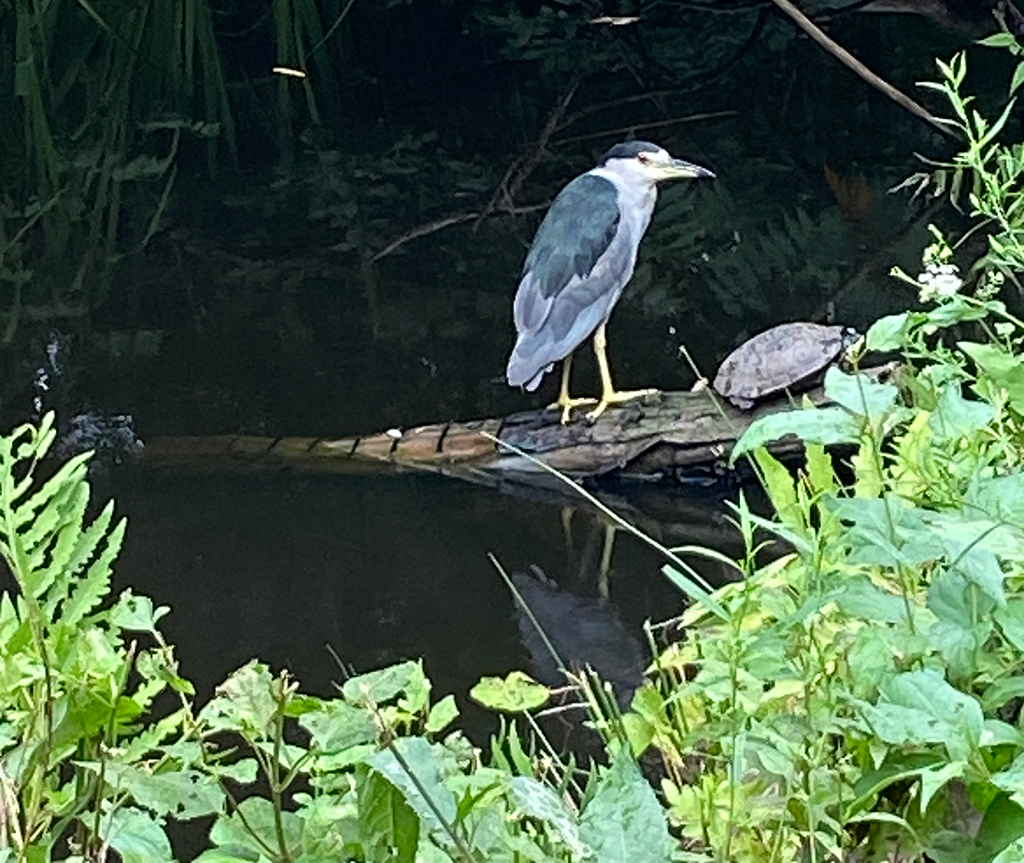
What are some of the native plants you love growing there and why are they important?
This may be a bit of a copout but I love the range of oak species—chestnut, red, and swamp oaks—that we have throughout BBP. We have so many beautiful ones! During my time here, I’ve learned about the host of biodiversity benefits that oak species bring to the environment. Every time I see an oak sapling in the park, likely planted by a local squirrel, I feel like I am looking at the future.
Oaks also remind me of the natural checks and balances that are at play here. About ten years ago, we had an outbreak of hard scale beetles, which were attaching themselves to bark and essentially sucking the nutrients out of the trees like vampires. We worked with a consulting arborist who advised using soft brushes to sweep away the scale off the oaks without damaging the tissues. We did as many as we could but we couldn’t get everything. When the arborist returned a year later, we noticed that most of the scale had been parasitized by parasitic wasps. It was really cool to see this natural phenomenon come to play. It’s one of those situations: if you build it, they will come.
But my shining light right now is Phlox subulata ‘Emerald Blue’ (‘Emerald Blue’ moss phlox). We order tons every year to plant in different areas, like our riparian structures that make up the waterfront’s edge and various stone crevices. We now see partial blooms extremely early from late December all the way into late May, sometimes, depending on how much heat we’re getting. So far, they have done a great job on the very large sound berms spreading and providing full coverage, preventing weeds from being able to push through them since they create these dense mats.
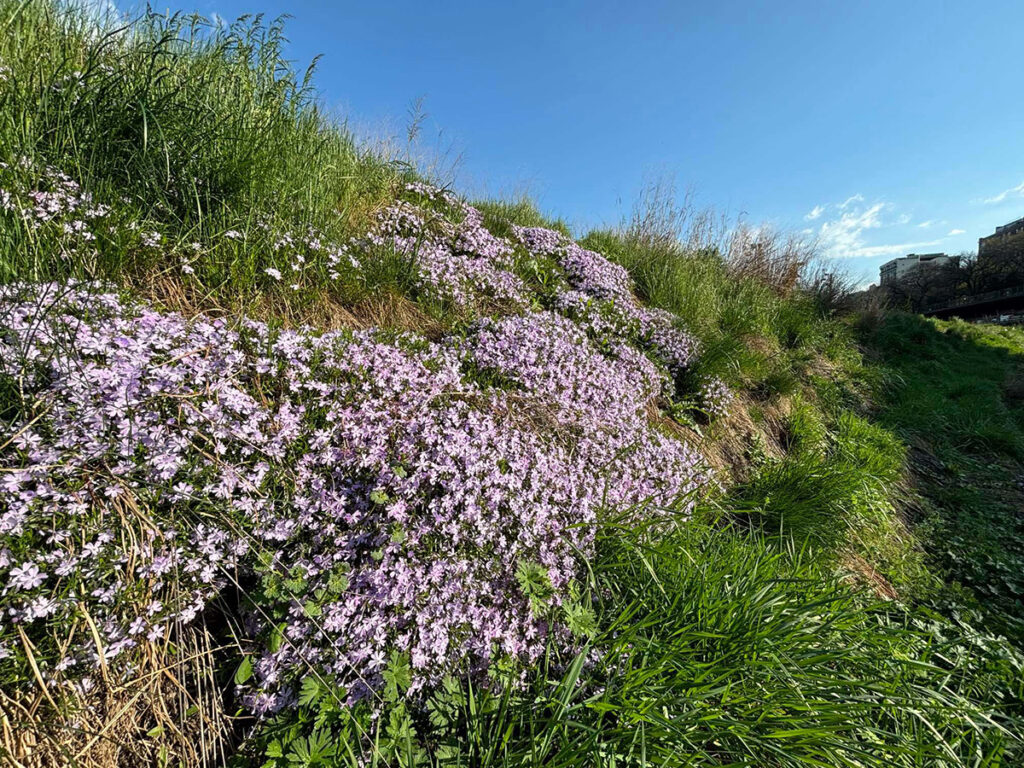
I also think all the Carex species in the park have been stellar. They’ve been key players in the successional plantings of the park, providing great coverage and weed suppression. They look good year-round without cutting them back. The new growth just pushes through quite successfully. Plus, leaving them standing all year provides these skirts and thickets of biome hubs for wildlife to incorporate themselves into.
What are you doing for biodiversity?
To answer this question, I have to zoom out to talk about the park’s original design. To keep it brief, the design firm Michael Van Valkenburg & Associates (MVVA) essentially had a blank canvas to work with when designing the park. Large slabs of concrete that make up the piers are exposed to full sun, predominant winds, and, of course, salt spray from the East River. Many of the trees that went into the park were intended to handle full sun and be quick growers like Rhus typhina (staghorn sumac) and London Plane trees. As these tree canopies increase in size, their shade profiles on the ground grow with it, so shrubs and herbaceous plants that were once thriving in the original planting begin to fade away. This is where we take the opportunity to incorporate new plants that can survive these new conditions. These plantings aim to bolster plant diversity and support the greater biodiversity of the park, as well as its overall capacity to support ecological relationships.
The shift in the landscape is what we define as successional management or adaptive management. Plant species selections and introductions often identify additional resources that can benefit park wildlife. We hope that these new species will encourage visits from something that hasn’t been observed within the park before. These resources come in several ways: building thickets that will protect wildlife from predators, promoting more food sources, such as berries for overwintering birds, or nectar and pollen for native bees and other insects. This leads to dozens of new successional plantings often focusing on improving the range of native perennial plants.
What’s your favorite spot in Brooklyn Bridge Park? Why?
The Sound Berms! They have offered me such a variety of experiences and challenges to solve. For context, BBP has 3 sound berms that are each roughly 42-feet tall and all together are over 2,600-feet long, without accounting for changes in topography. The berms are also one of the thresholds of protection against larger flooding conditions and mainly protect the park from the dense and consistent noise of the Brooklyn-Queens Expressway (BQE), which runs parallel to the main length of the park.
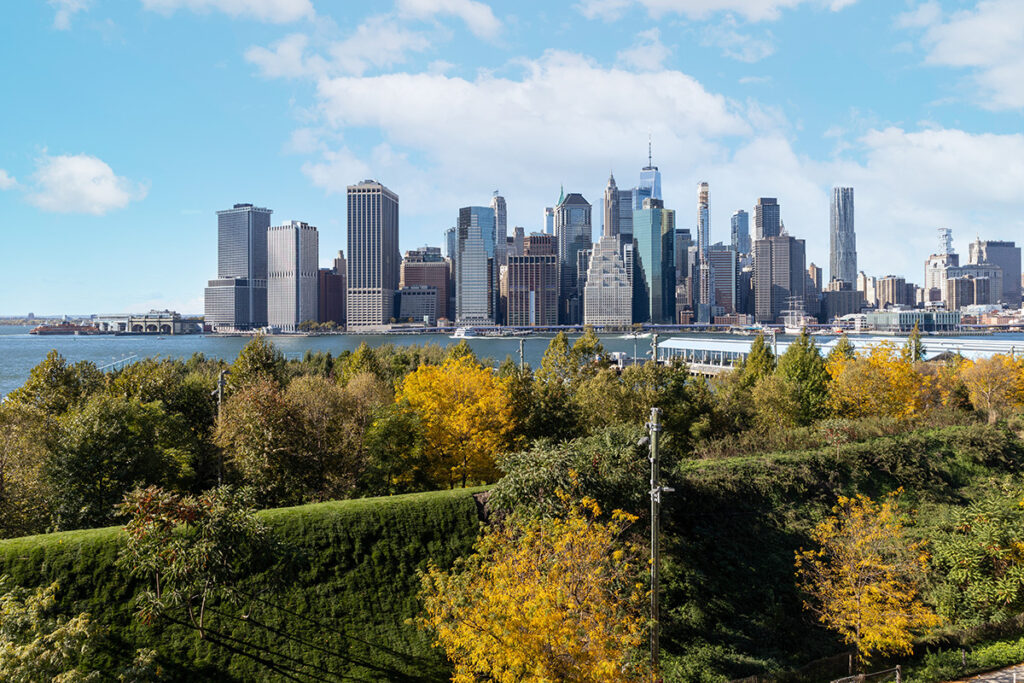
I love them for 3 reasons:
- Their larger isolation from the public allows them to act as wildlife crossings through the body of the park for mammals, like raccoons and opossums, as well as nesting spots for mallards each year (a key feature in trying to provide habitat).
- They were the most “trial and error” approach I have given to a landscape in terms of figuring out an appropriate management regimen for things like outcompeting aggressive weeds and managing eroding slopes.
- I was able to help herd and manage goats on the berm as an attempt to manage some aggressive invasive populations of Canadian thistle some years back. I feel like I learned how to traverse the berms just by being around the goats.
What do you think is the most important thing for gardeners to do (or not do)?
Research is key, as well as communication. There is great value in many people thinking about the same work, goals, and challenges—but from different angles. Being open to new ideas and the ability to articulate your own approaches is what helps the greater connectivity of this trade and helps us be adaptive like our gardens. Also, it’s equally important for those new to the horticulture sphere to NEVER be scared to be “mistaken” or “wrong” and NEVER hesitate to ask a question, even the same questions multiple times when learning about plants and ecosystems. At most conferences in horticulture, when there is a Q&A after a speaker, the first questions to come from the audience are usually the question that everyone has on their mind but might be hesitant to ask. Get the clarity that you need in life and for your pursuit of knowledge.

Rashid Poulson at work on one of the sound berms. Photo courtesy of Brooklyn Bridge Park.
We hear a lot about “right plant, right place,” what’s your version of that concept?
The credit in my version goes to the 70+ gardeners I have been lucky to work alongside over the last 12 years, especially at BBP where change in the landscape is driven by the gardening staff. What I’ve learned most from my time here is that landscape design work can go beyond “right plant, right place” to “right purpose, right plant, right place.”
When we rethink or design a landscape, we should be giving greater consideration to the existing and/or struggling local wildlife populations that rely on the food sources and shelter offered by native plants and specialized host plants. Let’s reverse engineer the processes so that landscape design, which is traditionally shaped by what is appealing to visitors, owners, or designers, starts by looking back to those historical stories to understand the native plant populations that have been phased out by human practices or the establishment of cityscapes. I often think of a future, like most post-apocalyptic cinematic pieces (minus the ensuing chaos that leads to a lack of modern human disturbance). The imagery of trees bursting through a skyscraper, vines dominating infrastructure, and herbaceous plants crowding city hellstrips. How do we get there in the urban environment? I think projects like BBP and many others are paving that way for us and that reimagination of the city of New York. And as we rethink design, I hope the phrase evolves to “right purpose, right plant, right place.”
by Melissa Ozawa
This is part of a series with Gardenista, which ran on April 17, 2024.
